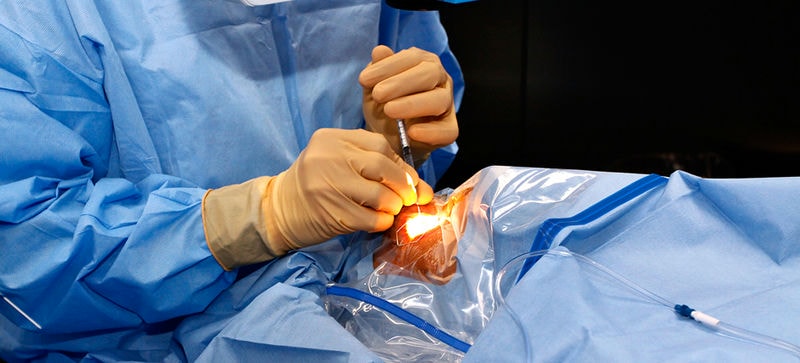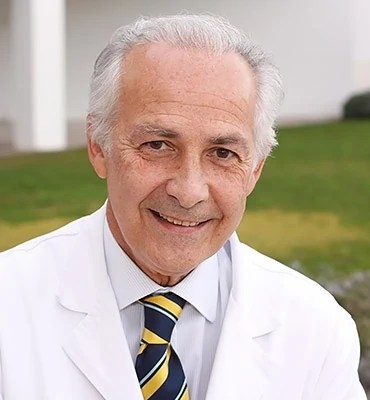
What does it involve?
Intraocular injection of anti-angiogenic drugs is the preferred treatment for wet age-related macular degeneration (AMD).
When is it carried out?
Treatment is indicated for cases of active wet AMD (it is important to remember that this treatment is not indicated for dry AMD).
Prior examination
A comprehensive eye and fundus examination is essential. An optical coherence tomography test is almost always performed and, occasionally, a fluorescein angiogram.
Before the surgery
Before the injection, the eye and eyelids are disinfected. After the injection, antibiotic eye drops have to be administered for a few days.
Surgery
The injection itself is a short procedure. It can be carried out in theatre or in the doctor’s surgery, but always under strict asepsis conditions. It is performed under topical anaesthesia (eye drops) and does not generally cause discomfort.
Risks
As in all surgical interventions, the greatest risk is eye infection. If the correct prophylactic measures are employed, however, the risk is minimised (much lower than after cataract surgery, for example).
Associated pathologies
Experts performing this treatment
FAQs
It is a grid of straight horizontal and vertical lines with a central point, used as a tool to detect visual disturbances in patients with scotoma or other anomalies.
Age-related macular degeneration is one of the greatest challenges in ophthalmology today. We know that there are two types: the dry form and the wet form. The dry form is experienced by patients who are slowly losing their vision. It has been demonstrated that treatment with antioxidants and vitamins can reduce vision loss, although the slowing down of the process is not particularly spectacular. The wet form, which is so called because fluid is produced in the macula, is the most destructive, and current treatment involves the combining of photodynamic therapy, which started to be used some years ago, with other treatments, which has produced more positive results. Each year, new possibilities appear, which help in the fight against this disease.
Yes, it is an emergency, but relatively speaking, as it is possible to wait 3 or 4 days. It is necessary to examine the eye, because the symptom could indicate the onset of decompensation, which can cause severe loss of vision. This distortion is sometimes not due to decompensation, but it always needs to be confirmed.
IMO Institute of Ocular Microsurgery
Josep María Lladó, 3
08035 Barcelona
Phone: (+34) 934 000 700
E-mail: international@imo.es
See map on Google Maps
By car
GPS navigator coordinates:
41º 24’ 38” N – 02º 07’ 29” E
Exit 7 of the Ronda de Dalt (mountain side). The clinic has a car park with more than 200 parking spaces.
By bus
Autobus H2: Rotonda de Bellesguard, parada 1540
Autobus 196: Josep Maria Lladó-Bellesguard, parada 3191
Autobuses H2, 123, 196: Ronda de Dalt – Bellesguard, parada 0071
How to arrive at IMO from:
IMO Madrid
C/ Valle de Pinares Llanos, 3
28035 Madrid
Phone: (+34) 910 783 783
See map in Google Maps
Public transport
Metro Lacoma (líne 7)
Autobuses:
- Lines 49 & 64, stop “Senda del Infante”
- Line N21, stop “Metro Lacoma”
Timetables
Patient care:
Monday to Friday, 8 a.m. to 9 p.m.
IMO Andorra
Av. de les Nacions Unides, 17
AD700 Escaldes-Engordany, Andorra
Phone: (+376) 688 55 44
See map in Google Maps
IMO Manresa
C/ Carrasco i Formiguera, 33 (Baixos)
08242 – Manresa
Tel: (+34) 938 749 160
See map in Google Maps
Public transport
FGC. Line R5 & R50 direction Manresa. Station/Stop: Baixador de Manresa
Timetables
Monday to Friday, 09:00 A.M – 07:00 PM











